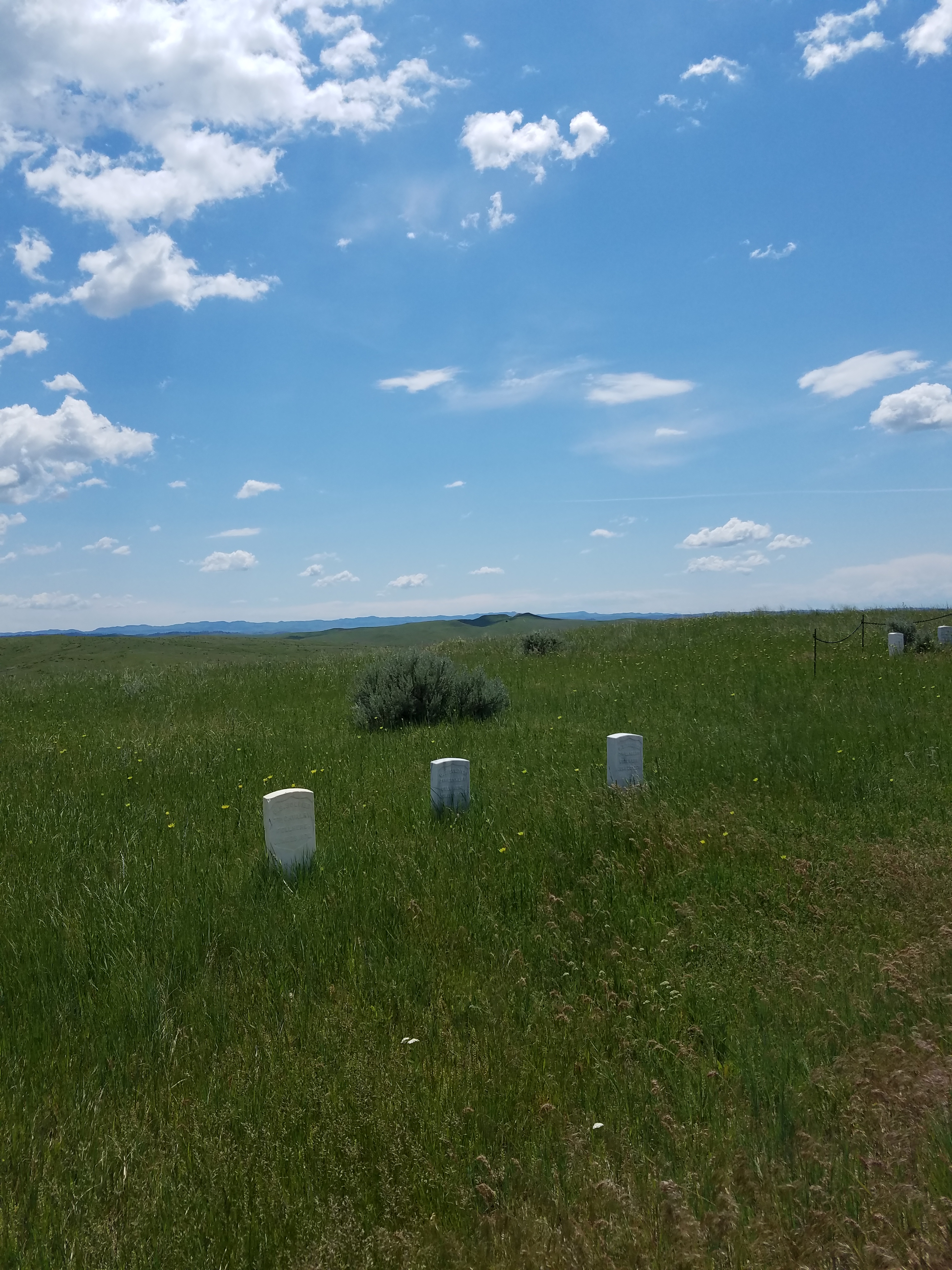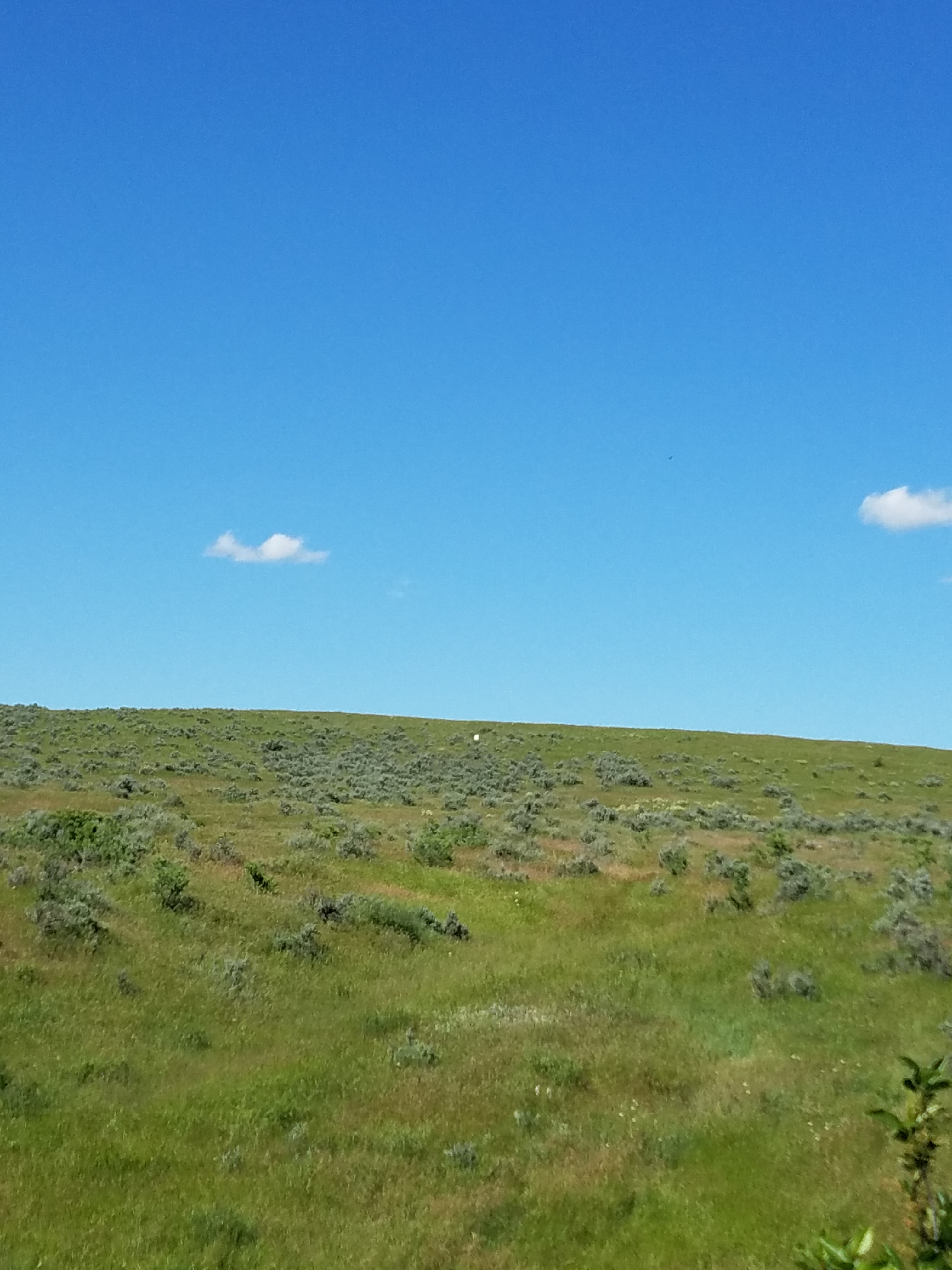From the ECW Archives: Scattered Across the Earth

On June 25, 2017, I wrote this article on the placement of headstones at the Little Bighorn battlefield. Today marks the 142nd Anniversary of the engagement. With that in mind, I decided to update the original work from the ECW archives and post it again.
Initially placed near the turn of the nineteenth century, many are located where Lt. Col. George Custer’s five company battalion perished. These simple marble markers are one of the more interesting aspects of the Little Bighorn story.
The first effort to identify the locations where soldiers fell came on June 28, 1876 with the initial interment by fellow members of the 7th U.S. Cavalry. “Oh what a slaughter”, wrote Private Thomas Coleman when he saw Custer’s battlefield. “How many homes were made desolate over this sad disaster.” Coleman’s thoughts were echoed by John Ryan. Company M’s First Sergeant, Ryan had seen the worst of war as a member of the Irish Brigade in the Army of the Potomac. “I served through the Civil War and saw many hard sights on the battlefield”, he recalled, “but never saw such as sight as I did there.” “The burial did not amount to much as we only had a few tools”, Ryan wrote. “We simply dug up a little dirt aside of the bodies and threw it over them.”
Captain Henry Nowlan, a member of the regiment who had been detached to serve as Quartermaster on Brig. Gen. Alfred Terry’s staff, drove a stake into the ground which contained an empty cartridge case with the name of the individual written on a piece of paper inside. This was only done, however, for the officers. Each grave was numbered and marked on a map drawn by Nowlan.
In July, 1877, Col. Michael Sheridan, Phil Sheridan’s brother returned to the Little Bighorn. Accompanied by a number of scouts and the reconstituted Company I, 7th Cavalry, his primary mission was to disinter the bodies of the officers for reburial elsewhere. Sheridan also directed a party to collect willow shoots from banks of the Little Bighorn and the river valley. Spreading out in a skirmish line, they walked the field and planted a shoot whenever a grave was found. The following day, Sheridan’s men disinterred and reburied the remains, marking the grave with a cedar stake.
Questions quickly arose over the identification of the most famous soldier who fell in the battle. Initially buried on the slope below the knoll where he fell, Sheridan encountered some difficulty in the attempt to identify George Custer’s remains. The first attempt to identify Custer proved inconclusive. One trooper insisted that a second try was successful. “They gathered up nothing substantial except one thigh bone and the skull attached to some part of the skeleton trunk”, recalled scout Thomas LeForge, of Custer’s disinterment. “Besides these, the quantity of cohering and transferable bodily substance was not enough to fill my hat.” Whatever of Custer remained were reburied in the West Point cemetery. Archaeological and forensic studies conducted in the latter part of the twentieth century added to this speculation. Remains examined in a plot at Little Bighorn National Cemetery matched an individual of Custer’s age and height, but did not yield a conclusive finding.
The passage of time along with visitors and souvenir hunters took its toll on these makeshift markers. Congressional visits finally prompted funding to place marble headstones on the battlefield at the location of each grave. In May, 1890, Capt. Owen Sweet and a contingent from the 25th U.S. Infantry arrived from nearby Fort Custer. For twelve days, Sweet’s men, like Sheridan’s before them, traversed the battlefield and erected the markers. Sweet’s work, however, does require some clarification.
There are an estimated 210 men who died with Custer. Sweet, however, placed 44 additional headstones on the ground encompassing his battlefield. These were intended to recognize the troopers who died during Maj. Marcus Reno’s Valley Fight that opened the battle. Sweet also indicated that he placed one headstone at graves where there appeared to be more than one interment. Additionally, he placed wooden markers at the graves of Custer’s brother Boston, nephew Harry Reed and reporter Mark Kellogg. These have since been replaced with modern headstones. The placement of headstones continued past 1890. In 1910, 1st Lt. James Porter and 2nd Lts. Henry Harrington and James Sturgis, the three officers from Custer’s battalion whose bodies were never identified, received headstones.
As one might expect there are some discrepancies which exist between the original placement of and in some cases, movement of the markers. For instance, George Custer’s headstone denotes the location where he was buried after the battle, as opposed to where his body was actually found. While Dr. George Lord likely perished on Last Stand Hill, his marker is located in the basin below near Deep Ravine. In the late 1940s, Superintendent Edward Luce, through on the ground research, was successful in moving the marker for First Sergeant James Butler to a knoll separating Deep Coulee and Medicine Tail Coulee, two massive ravines that link near the river.

Luce was also successful in moving 2nd Lt. Benjamin Hodgson’s marker. On the day of the battle, Hodgson acted as adjutant to Maj. Marcus Reno, Custer’s second in command. He was killed on the east bank of the Little Big Horn River during Reno’s retreat from the valley. Hodgson’s headstone was initially placed atop the bluffs above the river crossing until Luce moved it closer to the river and the vicinity where he fell.
There are also markers for individuals who died during Reno’s Valley Fight, but inaccessible to the public. In August 1938, Little Bighorn historians E.A. Brininstool, Charles Kuhlman, Fred Dustin and R.G. Ellison placed a small granite monument where one of the regiment’s scouts, “Lonesome” Charley Reynolds died. A marble headstone also stands where the commander of Company G, 1st Lt. Donald McIntosh was killed.
Even in the latter part of the twentieth century, headstones continue to be erected across the battlefield. Probably one of the more interesting stands near the trail to Deep Ravine. During an archaeological survey 1984, remains were unearthed near two markers, including skull fragments. This individual was later identified through forensic and visual analysis as Mitch Boyer, one of Custer’s scouts. Today, Boyer has his own headstone.
Visitors will also notice different colored markers dotting the battlefield. Rather than white marble, they are red granite and mark the where Sioux and Cheyenne warriors died. Since the Sioux evacuated their dead from the battlefield, it is difficult to establish the exact locations. With research and tribal oral tradition, some of these sites have been identified.

The most recognized of the Indian markers is for a Southern Cheyenne, Lame White Man, on the western face of Battle Ridge. Lame White Man led a charge that ultimately contributed to the destruction of Custer’s battalion. Where this assault took place remains a matter of debate among students of the battle.
No matter who they are for, the headstones remain one of the most striking and haunting sights on the battlefield. Conceivably, they are like individual monuments. Taken together, they form solemn tribute to the brave soldiers and warriors who died there.
Great article. I read it with interest because I live in Norwalk Ohio, not far from the Woodlawn Cemetery where one of Custer’s officers has been reinterred, Captain James Dewolf. One of four who rode with Custer at the Bighorn. He was killed when with Reno. I find it interesting because both places where I have lived have a connection to Dewolf (his birthplace & his resting place). He was a very interesting character of the Civil War & the 7th Cavalry. http://custerlives.com/7thcav5.htm
Hi James,
Thank you for reading and the kind words. If you were not already aware, Dr. DeWolf’s letters and diary have been republished by the University of Oklahoma Press.
I meant to say, “one of four surgeons with Custer”
Hi James,
I also believe there were actually three surgeons with the regiment. George Lord, who was killed with Custer’s battalion, DeWolf and Henry Porter.
You are correct. Thanks for the information on Dewolf’s letters.
A nice and balanced article. I haven’t seen much in print regarding the efforts to determine where the tribes’ casualties fell. There’s also never been much recognition that Custer’s opponents’ were the equivalent of an “Allied” or “United Nations” force. They fought together despite significant cultural and other differences.
For Daniel Davis:
In August of 2011 my cousin Dennis and I spent 4 days on site researching the Battle of the Little Bighorn. Through the kindness of the Trading Post owner and the local Battlefield Trust we were allowed to walk the portion of the battlefield just outside the boundary of the National Park specifically for the purpose of following Reno’s attack and retreat lines. On that side of the river we chanced upon a modern marker (see attached photo). Any other battlefield marker placed for this fallen soldier will be far from where he died. I appreciate your article – its content is consistent with my findings relative to the history of monument placement…a fascinating story in its own right. I’m curious about this modern marker though…supposing it was placed by the Battlefield Trust folks…or?
Best Regards,
Dale Fishel Olympia, WA
Hi Dale,
It doesn’t look like the picture came through. Please send via e-mail, danieltdavis81@gmail.com. I would love to see it.